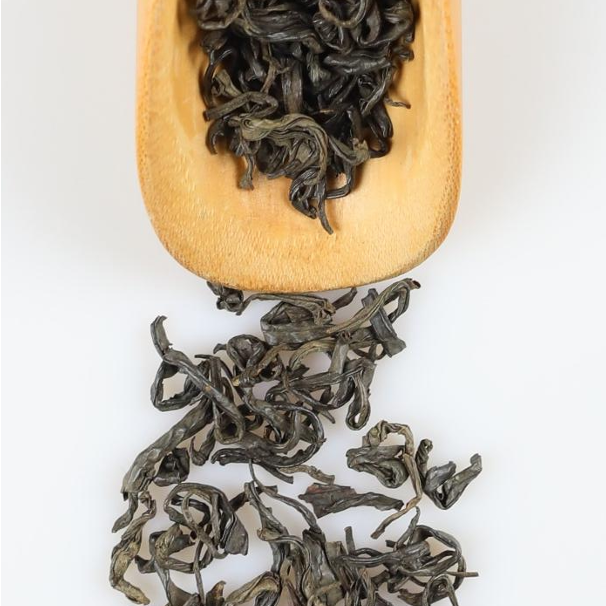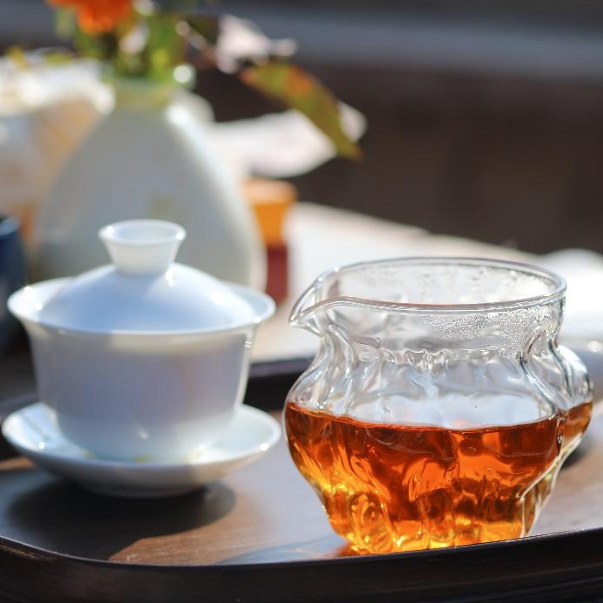Stands as a symbol of depth, tradition, and refined craftsmanship, representing one of the most celebrated and versatile styles in the world of tea. Harvested from carefully nurtured tea plants, only the finest leaves and tender buds are selected to ensure exceptional quality. The leaves undergo a meticulous process that begins with 10 hours of withering, a crucial step designed to reduce moisture content and ensure the freshness and vitality of the leaves. Throughout this stage, temperature and humidity are precisely controlled, and careful management of ventilation allows for gentle, even dehydration, laying the foundation for the tea’s refined aroma and taste.
Following withering, the leaves are expertly rolled and undergo full oxidation, transforming from fresh green to deep coppery hues. Ventilation fermentation plays a key role here, helping to retain the delicate floral and fruity aroma that defines high-quality black tea. The oxidation process is closely monitored to achieve the perfect balance of flavor and fragrance.
The result is a tea with an alluring, complex aroma, offering notes of malt, caramel, dried fruits, and subtle hints of cocoa or delicate flowers. On the palate, Black Tea reveals a smooth, full-bodied taste, delivering a satisfying harmony between natural sweetness and a gentle astringency. Layers of flavor unfold gracefully, leaving a warm, lingering finish that invites contemplation and repeated sips.
Beyond its taste, Black Tea embodies centuries of artisanal skill and cultural heritage, with each batch reflecting the unique terroir of its origin. Whether enjoyed pure, paired with milk, or blended with spices and flavors, Black Tea showcases remarkable versatility while maintaining its inherent elegance and strength. It is a true testament to the artistry, precision, and meticulous care that elevate this beloved tea to a timeless classic cherished by connoisseurs around the globe.
| Brewing Suggestion | Description | Green Tea Series | Black Tea Series | White Tea Series | Oolong Tea Series |
| Gongfu Tea | Using teaware to separate tea and water | Water temp: 85°C Tea-to-water ratio: 1:50 Time: 5 sec | Water temp: 90°C Tea-to-water ratio: 1:50 Time: 5 sec | Water temp: 100°C Tea-to-water ratio: 1:50 Time: 1 min | Water temp: 100°C Tea-to-water ratio: 1:50 Time: 15 sec |
| Cup Brewing | Tea leaves stay in the cup all the time, keep refilling when tea level drops below half | Water temp: 85°C Tea-to-water ratio: 1:100 Top pouring method: pour water first, then add tea | Water temp: 90°C Tea-to-water ratio: 1:100 Top pouring method: pour water first, then add tea | Water temp: 100°C Tea-to-water ratio: 1:100 Bottom pouring method: add tea first, then pour water | Water temp: 85°C Tea-to-water ratio: 1:100 Bottom pouring method: pour water first, then add tea |
| Room Temperature Brewing | Steep tea in room temperature water until flavor develops | Tea-to-water ratio: 1:100 Time: 1 hour | Tea-to-water ratio: 1:100 Time: 1 hour | Tea-to-water ratio: 1:100 Time: 1 hour | Tea-to-water ratio: 1:100 Time: 1 hour |
| Cold Brewing | Brew tea with room temp or iced water, then store at 0-10°C immediately | Tea-to-water ratio: 1:100 Time: 3-4 hours, depending on taste | Tea-to-water ratio: 1:100 Time: 3-4 hours, depending on taste | Tea-to-water ratio: 1:100 Time: 3-4 hours, depending on taste | Tea-to-water ratio: 1:100 Time: 3-4 hours, depending on taste |



